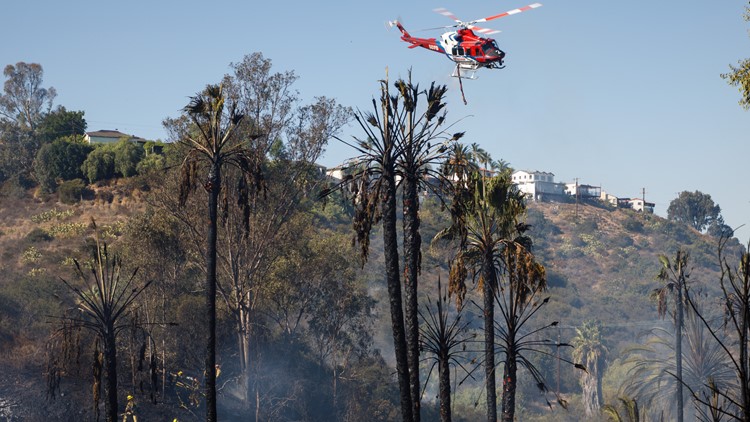SAN DIEGO — Look at the fire hazard map for San Diego, and it’s nearly all red zones.
San Diego’s landscape is dotted with hillside developments — old and new — that border scenic canyons and nature parks. The red on the map includes those brush-filled areas and signifies a very high fire danger.
The city fire department estimates the risk is highest for about 40,000 homes and vacant lots that sit along those canyon rims and slopes, from Cabrillo Canyon in Balboa Park to Tecolote Canyon in Clairemont to North Chollas Canyon in Oak Park.
Brush and overgrown vegetation have long created fire risks in San Diego and at all times of the year, but the situation has been exacerbated as the city grapples with a large, unsheltered homeless population, some of whom use the canyons as their home.
Fire incident call records obtained by inewsource prove the point: For the first nine months of this year, 11% of those calls mentioned homeless encampments.
Other public records and interviews with residents show frustration and at times anger with city officials over what’s seen as serious fire hazards caused by homeless living in the brush-filled canyons.
“It's their responsibility to protect and clear our community,” said Karen Lockshaw, who lives in Clairemont, four blocks from the Tecolote Canyon Natural Park.
Lockshaw called the city’s approach to managing brush and overgrowth an abuse of authority that puts parts of San Diego in danger of wildfires.
“It’s a matchbox,” she said. “It’s just a matter of time.”


Click here to search addresses the San Diego Fire-Rescue Department says are at high risk of wildfire.
Fire-related complaints filed on the city’s Get It Done app show she’s not alone.
“Illegal campsite with what appears to be some sort of campfire or cooking fire or something in Marston Canyon at the bottom of Vermont,” reads a report submitted in July.
“Possibility for fires, etc. exists with homeless camps. This is NOT a campground,” reads another, reporting concerns in Balboa Park in September. “This has been previously reported but the camp has grown larger.”
“I live on the corner of Mason and Jackson and hear yelling and fighting every day,” reads another from October 2018 about a homeless encampment in Presidio Park. “There is evidence beside these camps that they are building fires next to them. Please help remove theses camps as soon as possible.”
An attached photo shows a red baby stroller among the trees filled with personal belongings, and clothing hanging from a branch.
Tom Scott is a homeless veteran who said he’s lived in Balboa Park for about 15 years. He said he recognizes the conflict with residents and their fire fear.

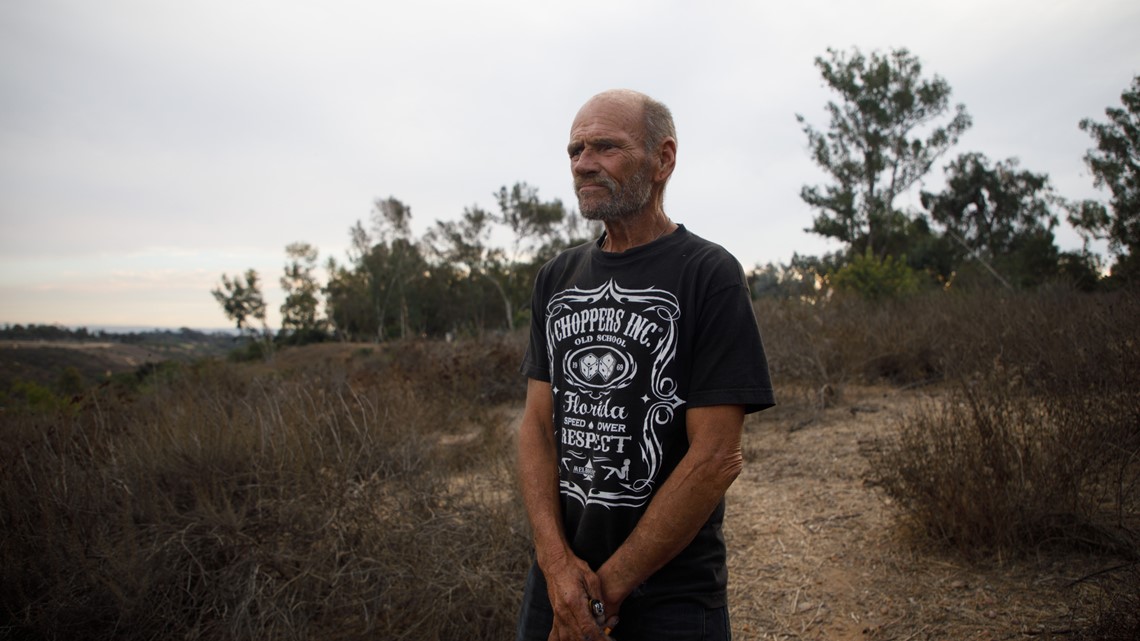
“I understand that part and why they don't like us down there,” Scott said. But, he added, the fires are a necessity when you live outdoors.
“We use fire in the canyons to eat with and to keep warm with at night,” he said. “A lot of times they’ll cover up with a tarp when it gets cold and put on every stick of clothing they got just to stay warm with. And a little candle underneath the tarp. … But then you're taking the risk of burning the canyon down and yourself."
Nothing like that has happened this year, but small fires linked to the homeless have threatened San Diego neighborhoods — from a brush fire in October near Talmadge and Kensington to a canyon fire in July in Skyline to an April blaze that homeless people trying to keep warm started inside a section of the Cabrillo Bridge in Balboa Park.
Deputy Fire Chief Doug Perry, who oversees the city’s fire prevention efforts, said he understands the public’s concern about fire risks within city parks.
“They have a right to be worried,” he said. “The San Diego area, probably our greatest concerns even more than earthquakes are wildland fires.”

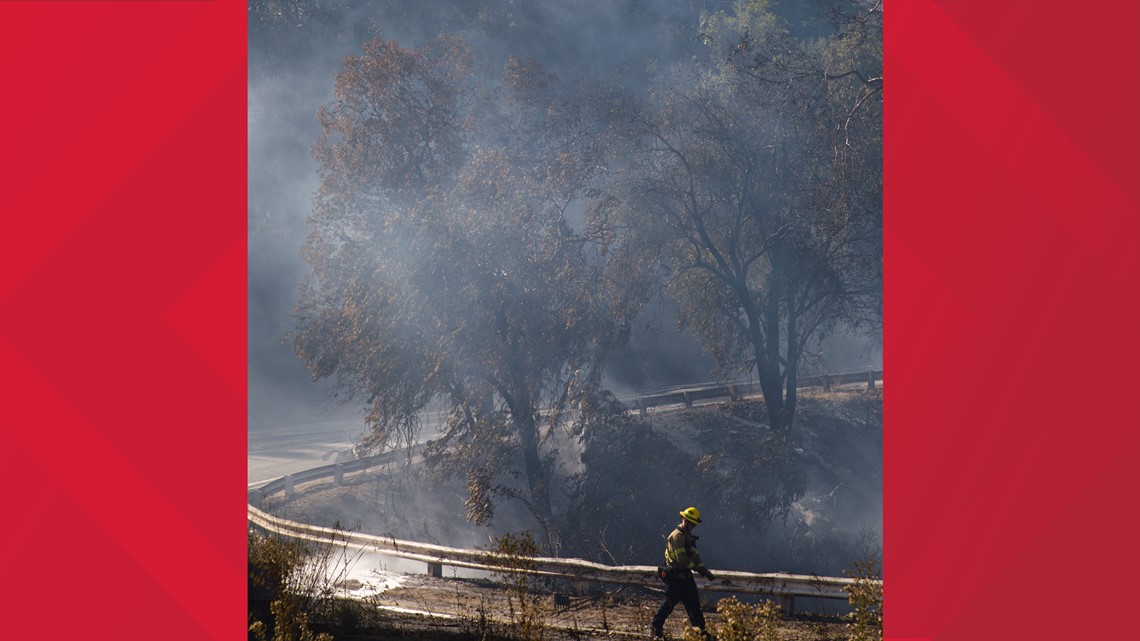
The city has made addressing homelessness a priority, he said, but added that the best solution would be to get people out of the canyon and park encampments and into some kind of housing.
“When they're cold, they're going to start fires,” Perry said. “Preventative-wise, we’ve got to find places for them to be housed and taken care of.”
inewsource asked for an interview with Mayor Kevin Faulconer and the head of his homeless efforts. His spokeswoman instead emailed a response to questions about fire risks associated with homeless people in the parks and canyons.
It said, in part: “If there is a potential fire risk, Mayor Faulconer has directed staff to remove that risk as quickly as possible. During peak fire season, public safety of all our residents is our number one priority and we are doing everything possible to mitigate the potential for spark.”
Get It Done app frustrates residents
Some residents who used the Get It Done app to report people living and setting up camps in canyons and parks found the system frustrating. They told inewsource their submissions were sometimes described as closed or corrected despite the problems not being fixed. Some residents experienced long delays in getting a response from the city, and others never heard back, according to an inewsource review of the complaint data.

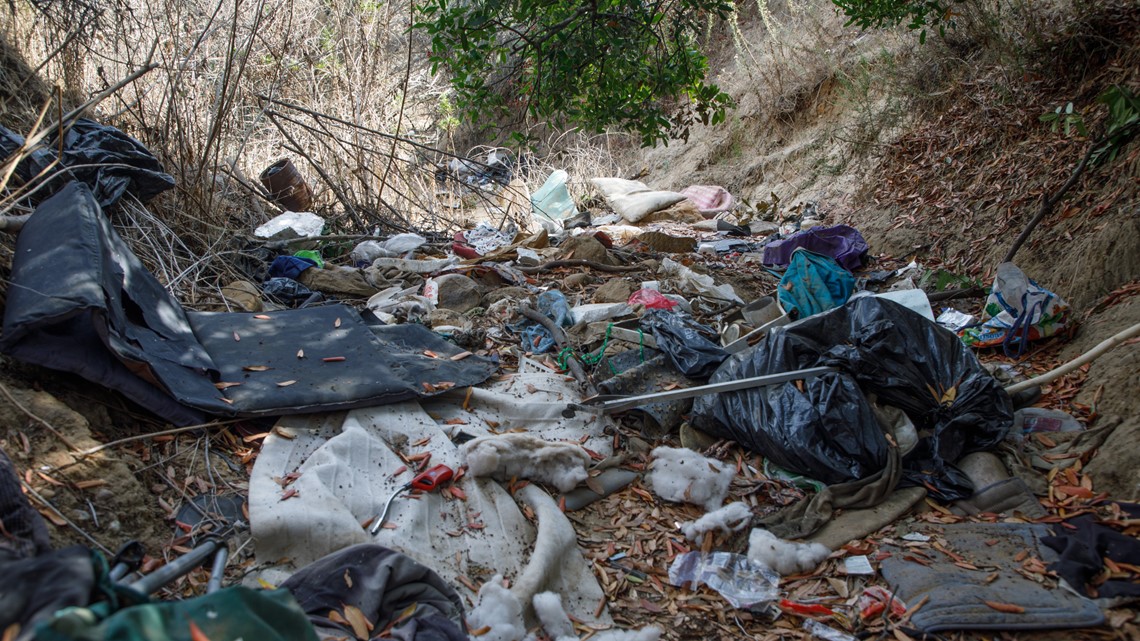
Lauren Williams lives in Mission Hills and is the Presidio Hills block captain for her neighborhood town council. She said she walks the trails in Presidio Park every day with her dogs and regularly files reports to the city on fire dangers related to the homeless.
“I worry about it all the time, all year round,” Williams said.
Her fear now that it has gotten cold is that the homeless people in the park will be lighting more fires to stay warm. She’d like the city to increase lighting and adjust when police patrol so the homeless don’t know when officers will be in the park.
“If Presidio Park catches fire, my home and all of our neighbors’ homes are going to catch fire very quickly,” Williams said.
She estimates she’s submitted about 150 Get It Done requests in the past year and a half — not all are about fire dangers and the homeless — and about half were responded to or resolved. Williams said she’d like the city to be more responsive to the submissions but is glad there is an easy way to report problems. She said she’s seen improvements in the park since she started using it.
Residents who have complained about homeless encampments and other illegal activity in North Chollas Community Park aren’t as positive about the app.

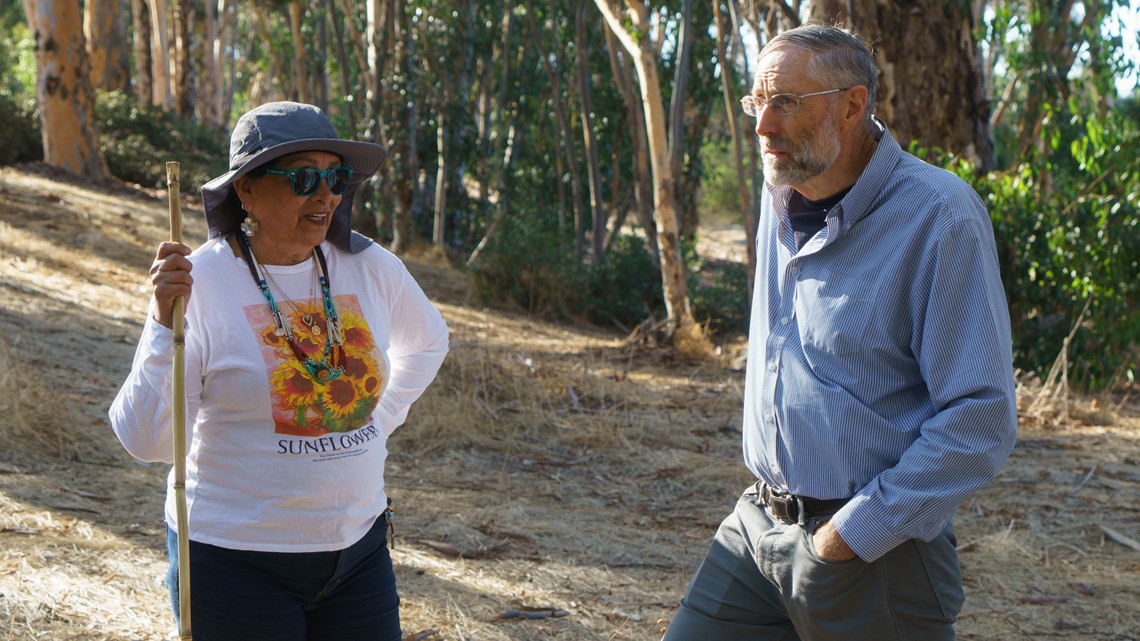
On Aug. 12, a resident filed two Get It Done complaints reporting homeless encampments inside the park.
Four days later, they were listed as corrected without the problems being addressed, neighbors said.
Then, on the afternoon of Aug. 25, a fire broke out in a canyon near where the encampments were reported. Firefighters stopped the blaze from spreading an hour after it was reported.
The cause was ruled undetermined, but one resident said a firefighter showed him where the fire likely originated. It was a known spot for fires lit by the homeless in the park, he said. While no one was injured and no homes were damaged, the fire alarmed the community.

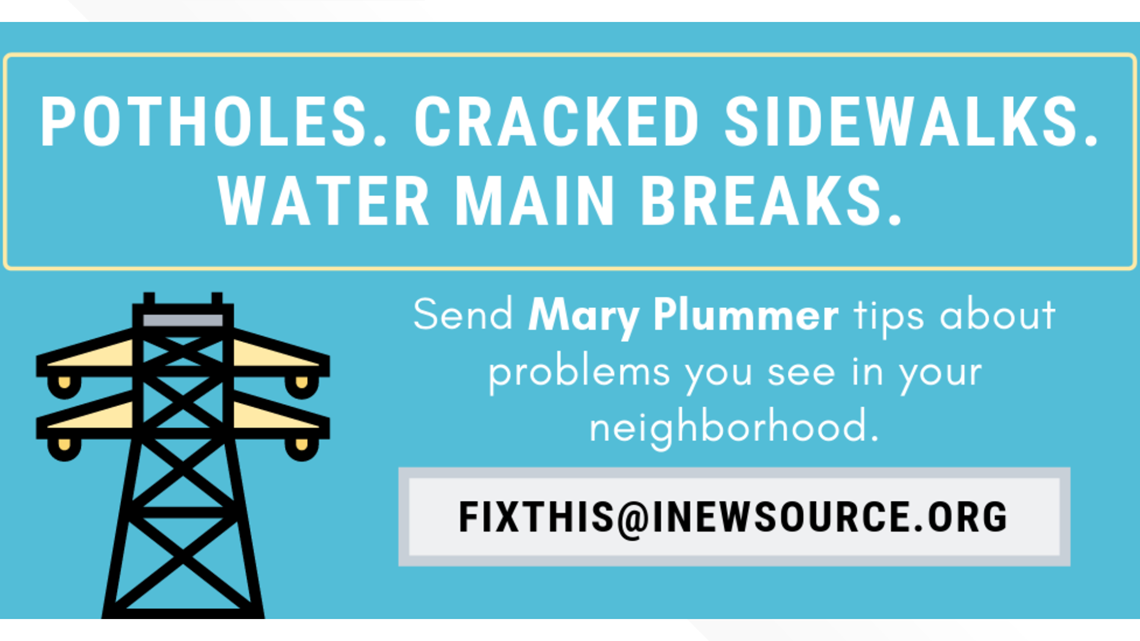
Residents wrote to Faulconer in September, citing “urgent requests” that included demands for more prompt responses to fire risk reports and illegal activity, clarification on which departments handle removing homeless encampments and improvements to the Get It Done app.
“We have used GET IT DONE frequently and have typically found it useless in addressing illegal activity in our park,” reads the letter signed by Oak Park Community Council President Richard Diaz on behalf of concerned residents.
Faulconer never responded personally to the letter, but his spokeswoman said the city has taken steps to address residents’ concerns. Among them: Police and workers from the Environmental Services Department cleaned up encampments, and an arborist assessed trees in the park.
Some neighbors said that’s not enough, and continue to call for safety improvements.
“We have gotten to a point that it's no longer just having a concern,” said Elida Chavez, who has lived in the neighborhood for 45 years. “But it's gotten to the point of being angry and standing up and having a voice.”


Bruce Thompson, another neighbor, said he continues to see evidence of problems and fire risks within the park. He described the current situation as a “bureaucratic bottleneck” that puts “people and property at risk.”
A recent park cleanup located “about eight lighters, eight empty marijuana containers, countless cigarette butts, many empty miniature cigar packages that people use to deal with marijuana so they don’t get cited for smoking marijuana in public,” Thompson said, plus materials used to smoke meth.
City officials acknowledge the Get It Done app needs fixes. It started as a pilot in 2016 and has had multiple updates and expansions. Another one is planned for early next year to streamline reporting of homeless encampments and directly route homeless problems to the Neighborhood Policing Division, which works with the Environmental Services Department to clear the camps.
City brush rules leave most of San Diego untouched
When it comes to fire prevention, the city’s own rules present challenges.
Fire officials said up to 100 feet of clearance is required in city parks with brush and vegetation that abuts homes. Depending on where the property line is, the city and homeowner share responsibility for maintaining the land.
The regulations do not require any brush clearance beyond 100 feet, including canyon beds where some homeless live.
North Chollas Community Park, for example, was in compliance with the city’s brush rules, a San Diego Fire-Rescue Department spokeswoman said.
The uneven topography where the fire originated prevented brush clearing, Tim Graham, a spokesman for the Parks and Recreation Department, said in an email. He said it wasn’t “feasible to cut brush in the area as we do not have equipment that would best be used in that area.”
The city assesses whether homes are properly protected and checks about 40,000 high-risk properties. Almost all of them are along canyons and hillsides.

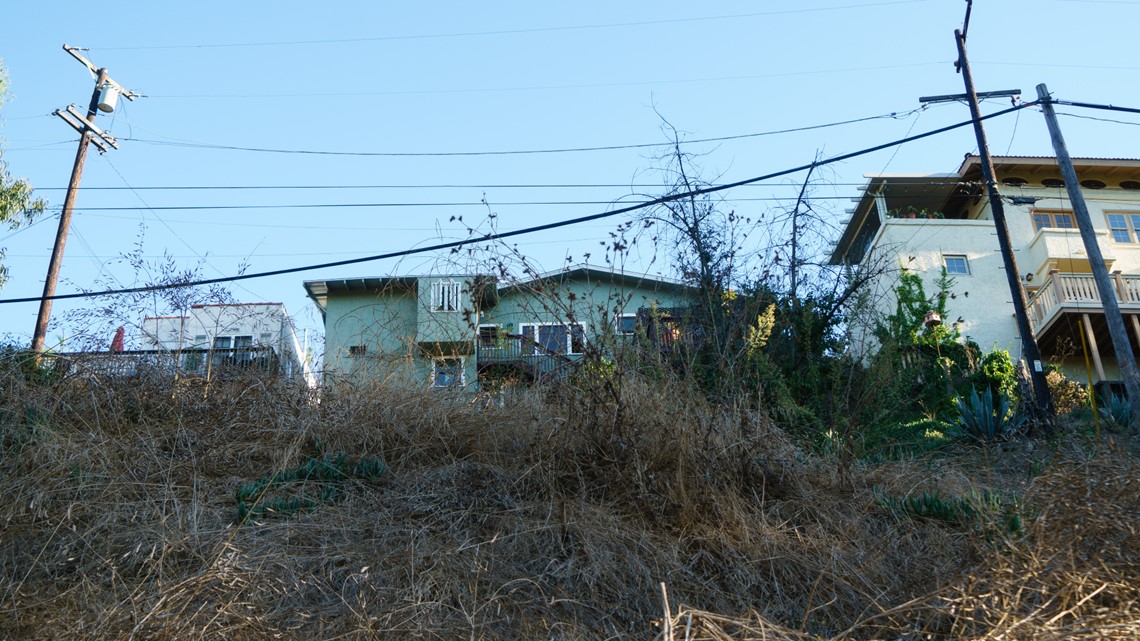
But city brush inspection records show those safety requirements are monitored infrequently.
The city employs a staff of seven to assess brush clearance compliance. From March 2017 to mid-November 2019, just 24% of sites had been inspected. Of those, 10.6% were out of compliance.
In addition to fire department inspections, the Parks and Recreation Department cuts brush and weeds in 11 areas of the city, but many residents feel it’s not enough.
Look up if you get brush services
If you live in San Diego, you can look up your community here to see if it receives brush management services from the city. Each designated area is scheduled to get work done every 21 months.
“I want that brush cleaned up and I want it done now,” said Chavez, who lives near North Chollas Community Park.
Her major concern, she said, is “that people are going to get hurt, that children, families, are going to get hurt, and whoever's living in this area is going to get hurt, too. It’s about saving lives.”
This fiscal year the city budgeted for the Parks and Recreation Department to clear 509 acres. For context, San Diego has more than 40,000 acres of parkland within its boundaries.
Living among the city’s brush
Scott, the veteran who lives in Balboa Park above Florida Canyon, served in the Vietnam War. He’s 64 and said he’s been homeless for four decades. He said he was born at the Navy’s old hospital in Balboa Park, a short walk from where he now lives outdoors.
When asked how he would respond to residents worried about the homeless setting fires in the parks where they live, as he does, he said there are always two sides.
“Are they going to come feed us? They ain't going to come down in the canyon and feed us. They ain't going to come down there and keep us warm,” Scott said.


Scott said he uses a camp stove to cook with – a safer option in his mind that allows for more control of the flames. Others put wax on wood to make fires for cooking, or use bark and paper bags for kindling, he said.
When Scott sees people creating fires within the canyon, he said he tells them to shut them down. Fires in the park’s mulch are very dangerous, he said, and will burn for a long time.
“Not all of us are bad people. Just because a couple of homeless go out and do stupid things doesn't mean all of us are that way, but they treat us all the same,” Scott said.
No one knows exactly how many homeless are living in the city’s brush-filled canyons and parks. When the annual point-in-time count is done on one night in January, volunteers are not sent into most of these areas. It’s dark and a safety concern, said Kat Durant, director of operations for the San Diego Regional Task Force on the Homeless, which oversees the count.


This year’s count identified 5,082 homeless people in the city, and more than half had no shelter. But Durant cautioned that the numbers are considered an count or minimum, because officials know they don’t capture everyone.
Tiffanie Gibford said she’s lived in Balboa Park for about six years, and she’s seen the number of homeless increase.
“It’s gotten worse,” she said.
But for now, it’s home to Gibford. She said she feels safer there than in a shelter, and that homeless people have campfires there every night.
inewsource video and photo journalist Zoë Meyers and intern Natallie Rocha contributed to this story.


